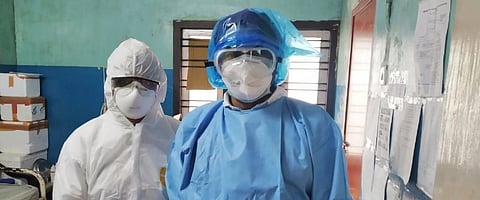Kerala and Cuba: How Left cousins won praise for COVID-19 fight
The Communist government in Cuba came in for international praise when it recently sent a team comprising 52 health professionals to Italy’s Lombardy — one of the worst hit regions by the novel coronavirus disease (COVID-19) pandemic.
The act of solidarity was celebrated by multiple Left groups across the world, including Kerala led by the Communist Party of India (Marxist).
Kerala is known as the first democratically elected Communist government in the world and has a few unique characteristics in common with the island nation. The two not only share a common political ideology based on communist-socialistic views, but strive to bolster female literacy rates, human development index (HDI), accessibility of public health services and contain population growth rate.
Interestingly, the HDI of Kerala (0.779) is close to Cuba’s (0.778). It was the highest among all Indian states in 2018.
Cuba has a track record of sending emergency medical teams to countries to combat disease spread. Around 28,000 Cuban doctors are currently serving around 59 countries, including the United Kingdom and France, in the wake of COVID-19 scare. Moreover, a profession for foreign currency, they consider it a rapid response in the crisis.
Here is where Kerala hops into the picture. The southern state of India is home to huge number of medical professionals, especially nurses, working internationally to fight the pandemic.
According to Kerala Migration Survey by S Irudaya Rajan and KC Zachariah, Centre for Development Studies (2019), around 90,000 nurses and 6,000 doctors from the state work abroad.
India sends is the second-largest exporter of health workers after the Philippines. Kerala accounts for the largest number OECD as well as the Western countries.
International migration is the matter of remitting foreign currency to the origin place. The serving countries give better payment to Cuban professionals, yet it is said that doctors get only a part of their salary while the remaining goes to the healthcare system.
In Kerala, the contribution of migrants is significant in the development of the health and education sector of the state. In the last two decades, Kerala became the origin hub of high-quality nurses across international borders.
The contribution of migrants in poverty eradication would be one reason, where the state stands with the least number of people under below poverty line.
Nurses from Kerala are known for their quality service and compassion, and health care institutes across the world acknowledge their work.
However, their videos wherein they shared their plight and panic as frontline workers to fight off the novel coronavirus garnered traction and sympathy.
When half the Cubans get remittance from abroad, Kerala, with thrice the population, also gets a bulk of foreign currency.
According to the Kerala Migration Survey, 2018, the state received around Rs 85,092 crore. Even if the state is going through the phase of ‘reverse migration’, the remittance is increasing by the year.
The amount remitted has increased by 20 per cent in the last three years. This was because skilled migrants such nurses and other medical professionals were replaced by low-skilled migrants.
Kerala recorded the first three COVID-19 cases in the country. But its strong network of medical facilities and professionals and its experience of handling the 2018 Nipah outbreak helped it tide over the worst.
The government already announced a six-month advance social security pension for 5.5 million pensioners and free food kits to nine million households across the state.


